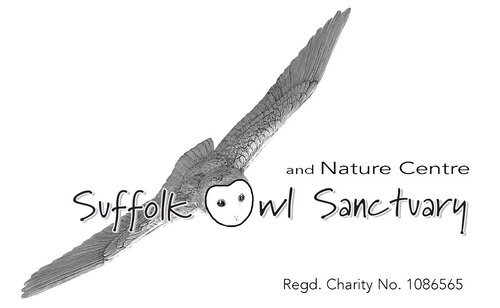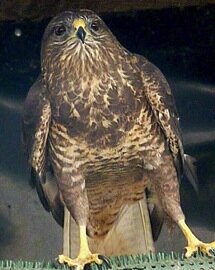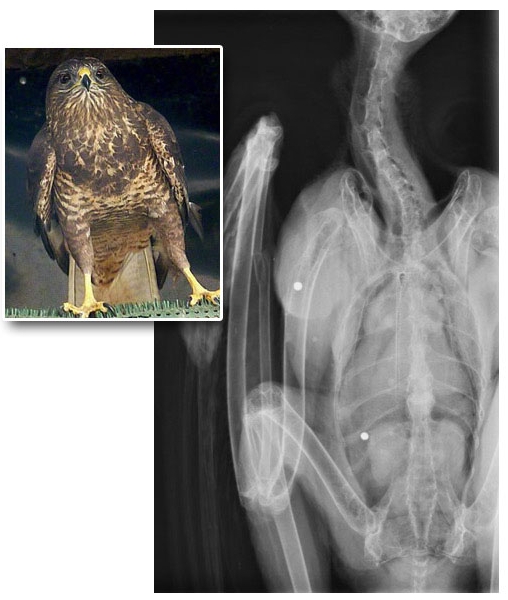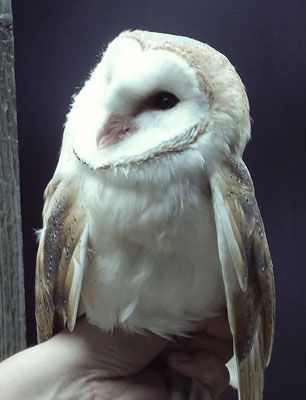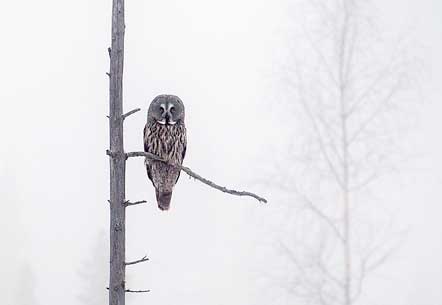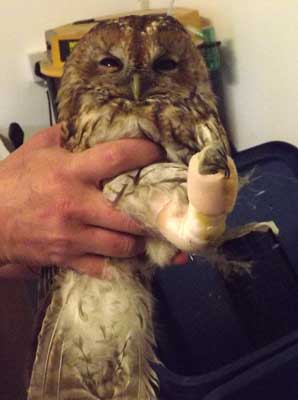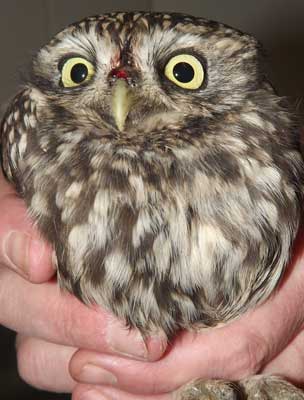Tawny Owls
The project currently has 48 nest boxes designed for this species of which 7 were used, producing 14 pullis. A further 4 boxes were used but these nests were abandoned, possibly due to harsh weather conditions prevailing at the wrong time. This was a disappointing result and down on last years figure of 17, though Tawny Owls continue to show an inclination for using the triangular boxes intended for Barn Owls.
Little Owls
Out of 26 nest boxes only one was used producing three pullis. There definitely appears to be reluctance for this species of Owl to use artificial sites, maybe attributed to the number of natural sites available for these smaller owls
Kestrels
In total the project has 36 Kestrel boxes and we had a reasonably successful year with 11 boxes being used to produce an average brood of 4, with some broods yielding up to 5 pullis, with all young fledging. (We also found Egyptian Geese had taken up residence in one of the boxes - a first for us
Sadly there were some losses - 4 boxes had pullis on our first visit which were too small to ring, but on our second visit none were found, which we assumed to have been predated by either Squirrels and/or Buzzards.
Due to the prevailing weather in early summer the breeding for these birds was inconsistent, with in excess of four weeks difference between egg laying from one clutch to another.
Other Information
Stock Doves still regularly use the Barn Owl boxes with 37 birds being ringed or banded. Approximately one third of the world population for this species of bird breed here in the British Isles with some having the tendency to move South in the winter during an inclement cold period.
Other box residents include both Jackdaws and Squirrels
The project continues to make and erect boxes in suitable habitat and is primarily run on a voluntary basis with the only income being derived from sponsorship of boxes by the general public, if you wish to help by sponsoring a box or you have suitable habitat for a nest box information can be obtained about the Thornham Owl Project by telephoning 01449 711788
During 2012 the project was centered at Thornham Magna with workshop and vehicle kindly being supplied by Mid Suffolk Council. However as of the end of year this facility will no longer be available and we will be based at The Suffolk Owl Sanctuary, Stonham Barns who will supply transport, workshops, storage and other facilities and with whom the project will run as a joint venture from 2013 onwards.
